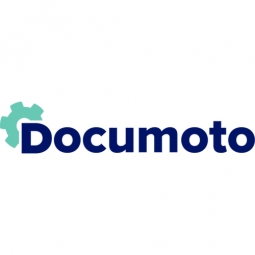下载PDF
Hiperbaric Reduces Pressure on After-Sales Support with Documoto
技术
- 应用基础设施与中间件 - 数据交换与集成
适用行业
- 食品与饮料
适用功能
- 维护
- 销售与市场营销
用例
- 预测性维护
- 远程资产管理
服务
- 系统集成
- 软件设计与工程服务
挑战
As Hiperbaric expanded its product base, they realized that their customer satisfaction goals required a more robust content solution for technical support. They needed a system where spare part information, service bulletins, and other technical documentation could be easily accessed by internal staff and machine owners. Traditional parts manuals were created and formatted using desktop publishing tools in a repetitive, mostly manual process. However, constant changes in parts information created a roadblock for time and efficiency, as each instance had to be manually updated and then redistributed in a timely fashion. Hiperbaric wanted to provide quick and accurate after-sales service, as even a brief stoppage in operation can shut down a food manufacturer’s production line and cause unacceptable impacts on output.
关于客户
Hiperbaric is a leading manufacturer of High Pressure Processing (HPP) equipment for the food production industry. Based in Spain, the company’s equipment is used in advanced food manufacturing plants worldwide. Since its inception in 1999, Hiperbaric has continued to push the cutting edge in the design, technological development, production, and commercialization of HPP equipment. High pressure processing is a cold pasteurization process that inactivates microorganisms responsible for spoilage, while maintaining the food items’ taste and texture. It is a widely proven, safe alternative to more destructive preservation techniques, and is used for meat products, fish and seafood, fruit, and vegetables, juices and beverages, dairy, and all types of ready-to-eat meals. This method of preservation reduces or eliminates the need for artificial and chemical preservative substances, which may offer both commercial and health benefits.
解决方案
Hiperbaric decided to implement Documoto, a cloud solution that offered always-on availability and great flexibility in data connectivity. It allowed vital information such as pricing and inventory to be transmitted directly from SAP into Documoto’s database. The implementation was managed by a Documoto channel partner and systems integrator, CIMWORKS of Spain. They converted graphical product information from their SOLIDWORKS CAD database into a graphic format compatible with Documoto. A Web services integration was configured to enable Documoto to retrieve real-time updates of part information, pricing, and stock availability from Hiperbaric’s SAP ERP system.
运营影响
数量效益
相关案例.

Case Study
The Kellogg Company
Kellogg keeps a close eye on its trade spend, analyzing large volumes of data and running complex simulations to predict which promotional activities will be the most effective. Kellogg needed to decrease the trade spend but its traditional relational database on premises could not keep up with the pace of demand.

Case Study
HEINEKEN Uses the Cloud to Reach 10.5 Million Consumers
For 2012 campaign, the Bond promotion, it planned to launch the campaign at the same time everywhere on the planet. That created unprecedented challenges for HEINEKEN—nowhere more so than in its technology operation. The primary digital content for the campaign was a 100-megabyte movie that had to play flawlessly for millions of viewers worldwide. After all, Bond never fails. No one was going to tolerate a technology failure that might bruise his brand.Previously, HEINEKEN had supported digital media at its outsourced datacenter. But that datacenter lacked the computing resources HEINEKEN needed, and building them—especially to support peak traffic that would total millions of simultaneous hits—would have been both time-consuming and expensive. Nor would it have provided the geographic reach that HEINEKEN needed to minimize latency worldwide.

Case Study
Energy Management System at Sugar Industry
The company wanted to use the information from the system to claim under the renewable energy certificate scheme. The benefit to the company under the renewable energy certificates is Rs 75 million a year. To enable the above, an end-to-end solution for load monitoring, consumption monitoring, online data monitoring, automatic meter data acquisition which can be exported to SAP and other applications is required.

Case Study
Coca Cola Swaziland Conco Case Study
Coco Cola Swaziland, South Africa would like to find a solution that would enable the following results: - Reduce energy consumption by 20% in one year. - Formulate a series of strategic initiatives that would enlist the commitment of corporate management and create employee awareness while helping meet departmental targets and investing in tools that assist with energy management. - Formulate a series of tactical initiatives that would optimize energy usage on the shop floor. These would include charging forklifts and running cold rooms only during off-peak periods, running the dust extractors only during working hours and basing lights and air-conditioning on someone’s presence. - Increase visibility into the factory and other processes. - Enable limited, non-intrusive control functions for certain processes.

Case Study
Temperature Monitoring for Restaurant Food Storage
When it came to implementing a solution, Mr. Nesbitt had an idea of what functionality that he wanted. Although not mandated by Health Canada, Mr. Nesbitt wanted to ensure quality control issues met the highest possible standards as part of his commitment to top-of-class food services. This wish list included an easy-to use temperature-monitoring system that could provide a visible display of the temperatures of all of his refrigerators and freezers, including historical information so that he could review the performance of his equipment. It also had to provide alert notification (but email alerts and SMS text message alerts) to alert key staff in the event that a cooling system was exceeding pre-set warning limits.

Case Study
Coca-Cola Refreshments, U.S.
Coca-Cola Refreshments owns and manages Coca-Cola branded refrigerators in retail establishments. Legacy systems were used to locate equipment information by logging onto multiple servers which took up to 8 hours to update information on 30-40 units. The company had no overall visibility into equipment status or maintenance history.





